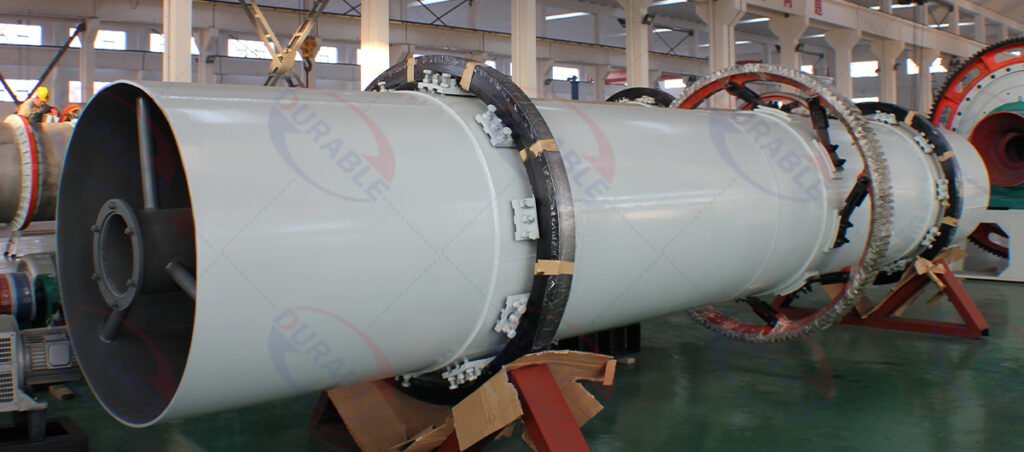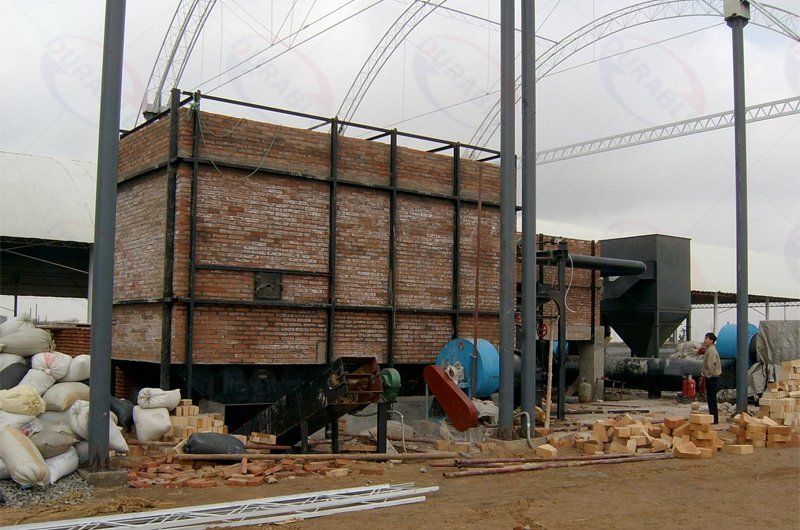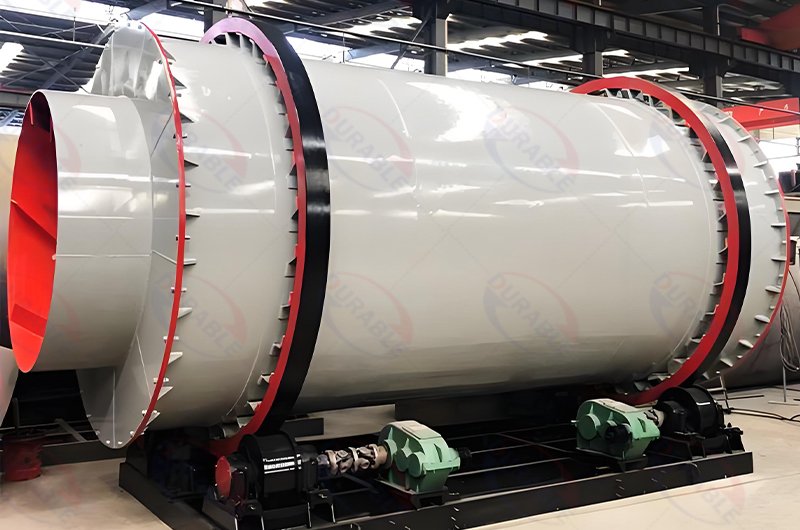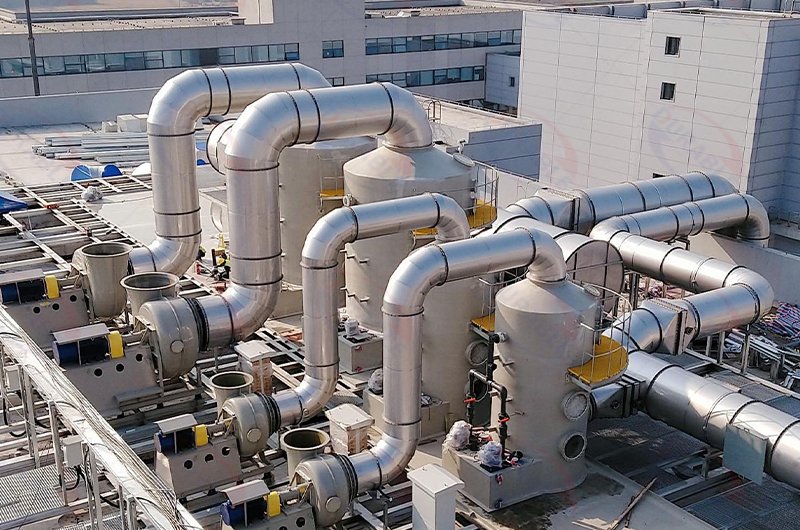Organic Fertilizer Dryer: A Complete Buyer’s Guide (2025)
Choosing the right organic fertilizer dryer is a critical investment. I’ve seen more money wasted on improperly selected dryers than almost any other equipment. People often think, “Drying is simple, just add heat.” This is a huge mistake. Drying organic fertilizer isn’t just about removing water; it’s a science. The material is often sticky, corrosive, and full of valuable nutrients that can be easily destroyed. This guide will walk you through the technical steps to make the right choice.

Table of Contents
- How to Choose a Dryer Based on Raw Material?
- How Do You Calculate Dryer Capacity?
- Which Heat Source Lowers Operating Costs?
- Are Rotary Dryers the Only Option?
- How Can You Guarantee Final Moisture?
- How Does a Dryer Meet Emission Standards?
- How Does Site Size Affect Dryer Selection?
- What Factors Influence the Final Dryer Price?
- How Do You Evaluate a Dryer Supplier?
- Frequently Asked Questions
- Conclusion and Final Advice
- About Durable
How to Choose a Dryer Based on Raw Material?
Before you even look at a single machine, you must understand your raw material. A good supplier will ask you about these details. If they don’t, they are not the right partner for you. Your material’s unique character determines the dryer’s design, size, and cost. It’s the most important step in the entire organic fertilizer dryer selection process.
I always tell my clients to analyze their material based on four key characteristics. First is the initial moisture content. Knowing whether your material is 80%, 60%, or 40% wet is the single biggest factor in determining the dryer’s size and energy needs. Second is how sticky the material is. Very sticky materials like fresh pig manure can build up on the inside walls of a standard dryer, causing blockages and fire hazards. Third is the particle size and shape. A dryer designed for a slurry will not work for a lumpy, fibrous compost. Finally, you must know how sensitive your material is to heat. Organic fertilizer contains valuable microorganisms and nutrients. If your drying temperature is too high, you will burn these away, destroying the value of your product.
Moisture, Viscosity, and Particle Shape
Moisture Content: This defines the amount of work the dryer has to do. Removing water from a material with 80% moisture to get it to 20% requires evaporating a massive volume of water. You need to measure this accurately to size your machine correctly.
Viscosity (Stickiness): For very sticky organic fertilizer raw material, a standard rotary drum dryer needs modifications. The front section should have special chain curtains or breaker bars. As the drum rotates, these chains swing and slap the material, breaking up clumps and preventing them from sticking to the walls.
Particle Size and Consistency: The internal lifters, or “flights,” inside the dryer must be designed for your material. These plates lift the material and cascade it through the hot air. A fine powder needs a different lifter design than a coarse, fibrous compost to ensure even and efficient drying.
| Raw Material | Key Challenge | Recommended Dryer Feature | Your Benefit |
|---|---|---|---|
| Fresh Chicken Manure | Corrosive, sticky | Stainless steel construction, chain breakers | Longer machine life, no blockages |
| Pig Manure Sludge | Very high moisture, high viscosity | Pre-treatment mixing, powerful breakers | Prevents caking, ensures smooth flow |
| Mushroom Compost | Fibrous, lumpy | Specially designed lifters | Even drying, prevents clumping |
| Municipal Sludge | High moisture, potential odor | Paddle dryer or sealed system | Efficient drying, odor control |
How Do You Calculate Dryer Capacity?
Your required capacity is not how much wet material goes in, but how much dry material you need to produce. This is a common point of confusion that leads to buying an undersized machine. The calculation is based on the amount of water you need to evaporate. For example, if you feed 10 tons per hour of material with 70% moisture and want a final product with 15% moisture, the dryer must evaporate about 6.5 tons of water every hour.
Always plan for slightly more capacity than you think you need. Running a dryer at 100% of its rated limit 24/7 is a recipe for premature wear and tear. A machine with 15-20% extra capacity will run more smoothly, require less maintenance, and can handle unexpected surges in material flow. This approach ensures your dryer capacity is sufficient for both current needs and future growth, providing a much better long-term return on your investment. Thinking about your daily or hourly production target in finished tons is the best starting point for this calculation.
Which Heat Source Lowers Operating Costs?
The cheapest fuel available in your region will determine your lowest operating cost. The choice of dryer heat source is a critical financial decision. While a gas furnace might be cleaner and easier to operate, if natural gas is expensive in your area, it will drain your profits. You have several options, and each comes with trade-offs between initial investment and long-term dryer operating cost.
Biomass fuels like wood chips, rice husks, or coconut shells can be extremely cheap, especially if they are a byproduct of your local industry. However, a biomass furnace is more complex and requires a more sophisticated feeding system, increasing the initial organic fertilizer dryer price. Coal is often cheap but comes with significant environmental challenges and may not be permitted in your area. Natural gas and diesel offer clean, stable heat and are easy to control, but their price can be volatile. A detailed cost analysis of your local fuel prices is essential before you make a final decision.



| Heat Source | Upfront Cost | Operating Cost | Environmental Friendliness |
|---|---|---|---|
| Natural Gas/LPG | Medium | High / Volatile | High |
| Biomass (Wood, Husks) | High | Very Low | High (Carbon Neutral) |
| Coal | Medium-High | Low | Low |
| Diesel / Fuel Oil | Low | Very High | Low |
Are Rotary Dryers the Only Option?
For most bulk organic fertilizers, the rotary drum dryer is the industry workhorse, but the internal design is what truly matters. It is a robust, high-capacity machine that can handle variations in material. However, not all rotary dryers are created equal. The key to success lies in the internal structure, which must be customized for your material. A simple, empty rotating tube is a recipe for disaster with sticky organic materials.
While the rotary dryer is the most common, other types exist for specific applications. For extremely wet, sludge-like materials, a paddle dryer might be a better choice. It uses heated, rotating paddles to mix and dry the material through conduction, which is a gentler process. A triple-pass rotary drum dryer is another option, offering a more compact footprint by nesting three drums within each other. This increases the material’s residence time in a shorter machine, making it highly efficient. However, for general-purpose organic fertilizer drying, a well-designed single-pass rotary dryer remains the most reliable and cost-effective solution.


How Can You Guarantee Final Moisture?
Consistent final moisture is achieved through precise process control. You cannot just “set it and forget it.” The key is to have a system that allows you to control the three main variables of drying: heat, residence time, and airflow. The hot air temperature from the furnace must be stable and controllable. The rotation speed of the dryer drum determines the residence time—how long the material stays inside. A slower rotation means longer drying time.
Finally, the airflow, managed by a powerful fan, carries the moisture away. A modern organic fertilizer dryer should be equipped with a control panel, ideally a PLC system, that allows you to monitor and adjust these parameters in real-time. Temperature sensors at the inlet and outlet provide critical data. By balancing these three factors, you can precisely control the drying process and consistently hit your target final moisture content, whether it’s 15% for bagging or 30% for pelletizing. This level of control is essential for producing a high-quality, stable final product.
How Does a Dryer Meet Emission Standards?
An effective dust and odor collection system is not an option; it’s a mandatory part of the complete dryer setup. When you dry organic materials, you will generate dust and potentially strong odors. Local environmental regulations will dictate the level of emission control you need. A basic system uses a cyclone dust collector, which uses centrifugal force to separate larger dust particles from the air stream. This is often sufficient for remote locations.


However, in more regulated areas, a cyclone is not enough. You will need a baghouse filter, which passes the exhaust air through a series of fabric bags to capture even the finest dust particles. For materials with strong odors, like manure or sludge, you may also need a wet scrubber or an activated carbon filter to “wash” the smell out of the air. When you choose an organic fertilizer dryer, make sure your supplier offers a complete environmental protection dryer system that will keep you compliant with local laws and maintain good relationships with your neighbors.
How Does Site Size Affect Dryer Selection?
A rotary dryer system is a long, linear assembly, and you must plan for the entire footprint. A common mistake is to only consider the dimensions of the dryer drum itself. The complete system includes the feeding conveyor, the furnace, the dryer drum, the discharge conveyor, and the dust collection system. All of these components are arranged in a line, which can easily exceed 30-40 meters in length for a medium-capacity system.
You must also account for sufficient space around the equipment for safe operation and maintenance. You will need access for cleaning, lubricating bearings, and servicing the drive system. Before finalizing your order, create a detailed layout drawing of your proposed site. Share this with your potential organic fertilizer dryer supplier to ensure that the equipment will fit comfortably and that the material flow is logical and efficient. Ignoring site limitations can lead to costly installation problems and an inefficient, unsafe workspace.
What Factors Influence the Final Dryer Price?
The price is determined by the complete system’s specifications, not just the size of the drum. When you receive a quote, you need to understand what is included. A low price might be tempting, but it often means critical components are missing or are of lower quality. The final organic fertilizer dryer price is a combination of several key factors that you should review carefully.
Here are the primary cost drivers:
- Capacity: The amount of water to be evaporated per hour. This is the biggest factor affecting the dryer’s size and cost.
- Material of Construction: For corrosive materials like chicken manure, using stainless steel instead of standard carbon steel can significantly increase the price, but it is essential for the machine’s longevity.
- Heat Source: The type and size of the furnace (biomass, gas, coal) will impact the cost. A complex biomass furnace is more expensive than a simple gas burner.
- Environmental Controls: A basic cyclone is much cheaper than a high-efficiency baghouse filter or a wet scrubber system.
- Automation Level: A system with a fully automated PLC control panel will cost more than one with simple manual controls.
- Scope of Supply: Is the quote for the full system (feeders, furnace, dryer, conveyors, dust collector) or just the dryer drum? Always ask for a detailed list of included components.
How Do You Evaluate a Dryer Supplier?
Choosing the right supplier is about finding a technical partner, not just a seller. The supplier’s expertise is just as important as the machine itself. A professional organic fertilizer dryer supplier will guide you through the selection process, asking detailed questions about your material and goals. They will focus on providing a solution, not just selling a product.
Here is a checklist I use to evaluate suppliers:
- They Analyze Your Material: A top-tier supplier will insist that you send them a 50-100 kg sample of your raw material. They will test it to understand its specific characteristics. Any supplier who gives you a final quote without this step is just guessing.
- They Offer a Complete System: They should design and quote the entire system, from feeding to dust collection, ensuring all components work together seamlessly.
- They Discuss Material Options: They will explain the pros and cons of using carbon steel versus stainless steel based on your material’s corrosive properties.
- They Show You Proof: Ask for case studies or references from clients who are drying a material similar to yours. Experience in drying cow dung is not the same as experience with food waste.
- They Provide Technical Support: A good partner offers support beyond the sale, including installation supervision, operator training, and reliable after-sales service for spare parts and troubleshooting.
Frequently Asked Questions
1. Can one dryer be used for different types of organic materials?
Yes, but with some limitations. A dryer designed for a non-sticky material like compost may struggle with very wet, sticky pig manure. A versatile design with features like adjustable rotation speed and internal chain breakers offers the most flexibility for handling different raw materials.
2. What is the typical service life of a rotary organic fertilizer dryer?
A well-built rotary dryer made from appropriate materials (like stainless steel for corrosive feedstock) and properly maintained can have a service life of 15-20 years or more. Regular maintenance, especially of the riding rings, bearings, and drive system, is crucial.
3. How much does an organic fertilizer dryer cost?
The price can range from $20,000 for a very small, simple system to over $500,000 for a large-scale, fully automated system with advanced environmental controls. The final cost depends entirely on capacity, materials of construction, heat source, and the scope of supply.
4. Is a direct heat or indirect heat dryer better for organic fertilizer?
A direct heat dryer, where hot air mixes with the material, is the most common and thermally efficient. However, you must carefully control the inlet temperature to avoid scorching the nutrients. An indirect heat dryer is much gentler but is also slower, less efficient, and significantly more expensive. For most bulk fertilizer applications, direct heat is the standard.
Conclusion and Final Advice
Selecting the right organic fertilizer dryer is a detailed process that goes far beyond comparing prices. It begins with a deep understanding of your raw material—its moisture, stickiness, and heat sensitivity. From there, you must define your operational goals for capacity, fuel source, and environmental compliance. The best solution is rarely the cheapest one upfront. A well-engineered system, customized for your specific needs, will pay for itself many times over through fuel savings, low maintenance, and a consistent, high-quality final product.
My final piece of advice is to choose a partner, not just a product. Work with a supplier who invests the time to understand your project and has proven experience with materials like yours. This partnership is the best guarantee of your long-term success.
About Durable
At Durable, we have been engineering and manufacturing mineral and material processing equipment since 2001. We specialize in creating complete, customized drying solutions. Our team of 15 engineers works directly with you to analyze your material and design a robust, efficient organic fertilizer dryer system that meets your exact specifications. We provide full-system support, from initial design to installation, training, and after-sales service.
If you are ready to discuss your project, contact us today for a professional consultation and a detailed quote based on your unique needs.
 Durable Machinery
Durable Machinery